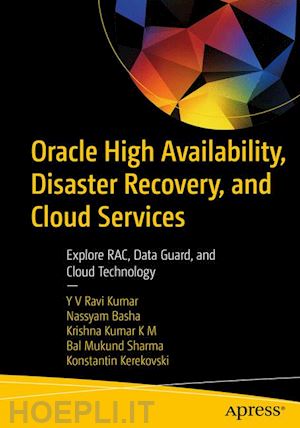is an Oracle ACE Director and Oracle Certified Master (OCM) with 20 years of experience in Banking, Financial Services and Insurance (BFSI) vertical and played various roles like Senior Database Architect and Production DBA. He is also OCP in Oracle 8i, 9i, 10g, 11g & 12c and Certified in Golden Gate, RAC, and Performance Tuning & Oracle Exadata. He has written 90+ articles for OTN-Spanish, OTN-Portuguese, OTN-English, TOAD World, UKOUG, OTech Magazine and Redgate. He is a frequent Oracle speaker in @NYOUG, @OTN, AIOUG, Sangam and IOUG. He designed, architected and implemented Core Banking System (CBS) Database for Central Banks of two countries - India & Mahe, Seychelles.
Nassyam Basha is a technology expert with 11 years of Oracle Database experience. He holds a master’s degree in computer science. In 2014 he became an Oracle Database 11g Certified Master. Nassyam was honored with the title of Oracle ACE Director in 2015 based on his extraordinary contributions to the Oracle community. He was the second Oracle ACE Director in India in the area of database management. He is board member of the Oracle RACSIG team. He actively participates in Oracle-related forums, such as OTN, Oracle Lists (with the status of Super Hero), and Oracle Support (with the title of Guru), and acts as an OTN moderator. He has deep knowledge in the business fields of finance, retail, health, manufacturing, and consulting.
KM Krishna Kumar is a Database Administrator. He holds master's degree in Business administration from Anna University. He started working with oracle technologies from 2004 as DBA and worked with Oracle Corporation for 5+ years. He had involved in Beta testing of Database upgrade and written knowledge articles. He is an Oracle 11g and 12c certified professional and having good knowledge in Oracle technologies such as Installation, patching, DB upgrade using various methods, Data Guard, RMAN, RAC. He has delivered presentations to customers through various channels. He actively participates in Oracle-related forums such as OTN communities.
Bal Sharma is an Oracle Certified Professional (OCP) with 14 years of experience across various industries like Telecom, Healthcare, Financial Services and Insurance; played various roles like Database Manager and Technical lead DBA, Content Architect. He holds several certification across Oracle 10g/11g/12c and Certified in RAC and Oracle Exadata. In his recent role he has been advising customers on adoption of Hybrid Cloud platforms, primarily focusing on database technologies like High Availability and Engineered Systems. He has been in setting up a Database strategies for the largest Banks and Telco’s in India. He has lead various complex implementations at top banks and Talco’s in India. Bal is an avid technologist and believes customer satisfaction is of prime importance, his work across customers like State Bank of India, HDFC, Idea Cellular and Vodafone is a testimonial for the same. Besides this, Bal enjoys cooking for friends and family.
Konstantin Kerekovski is an Oracle Professional with over 6 years of experience in the Financial Services Industry. Konstantin Kerekovski is a member of the Independent Oracle User Group, Suncoast. Oracle User Group and the New York Oracle User Group.. Konstantin Kerekovski has worked as a Senior and Lead Database Administrator with Production Support duties in the Financial Services Industry. Konstantin Kerekovski is a speaker at IOUG Collaborate 2017 as well as SOUG and NYOUG meetings. Konstantin is an expert at oracle Real Application Cluster Technologies, ASM, Goldengate and Oracle 11g and 12c.












